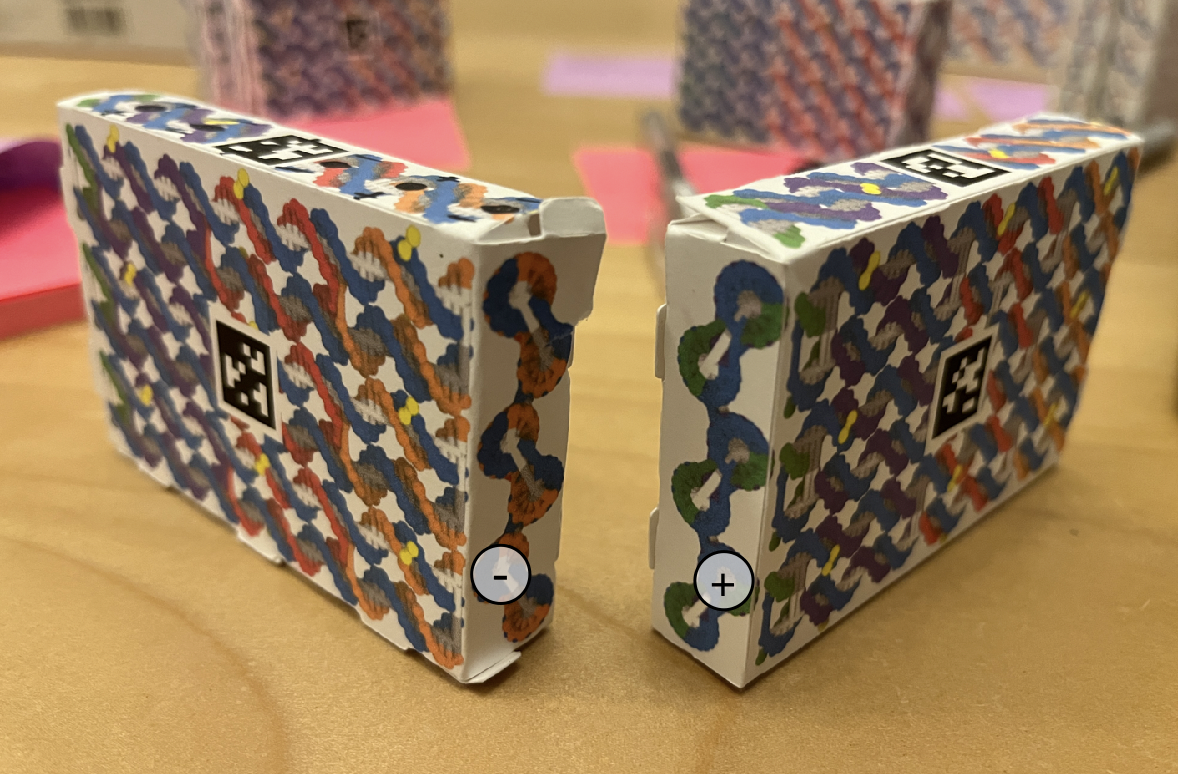I guess each block also has another magnet on each end, but those are easy. (Although I wonder if we actually want two magnets per end, so the blocks don't rotate? Maybe not, depends how it feels.)

On Jul 5, 2022, at 10:50 PM, Bret Victor wrote:The dot code can either be:- aligned with the magnets (and presumably, crossovers), in which case we get a uniform grid of dots, but have to read odd rows backwards.- or, centered within the block, in which case we have staggered dots. And also have to read them backwards.I guess the first option is the only one that makes sense, assuming there's enough space to squeeze in that last dot.<EE30C6FC-C1FB-459A-9F21-59908D1C8C66-438-0001C0D4AF377C75.png>On Jul 5, 2022, at 10:43 PM, Bret Victor wrote:I think this magnet pattern works. This is a single species of block that can be flipped around to mate with itself with the proper stagger, and can be shifted left and right by two turns. This is a top view, showing the pattern:<7B6F1B40-412B-46F7-BD27-2920C1699AE7-438-0001BFA5AFE5246F.png><63EA2870-2BA0-4777-8B4B-7ED8B3378**********BFA986712866.png>The actual magnets should probably be placed on the side along the second helix from the bottom, so blocks of any height will snap together. This is 12 magnets for a 6-turn block (one magnet per turn per side) which is a lot, but I think that's the minimum to get the snaps that we want.<32C8D4B5-267A-4C3E-8757-29DEF7906**********C02EBE6E3D78.png>I think this works??